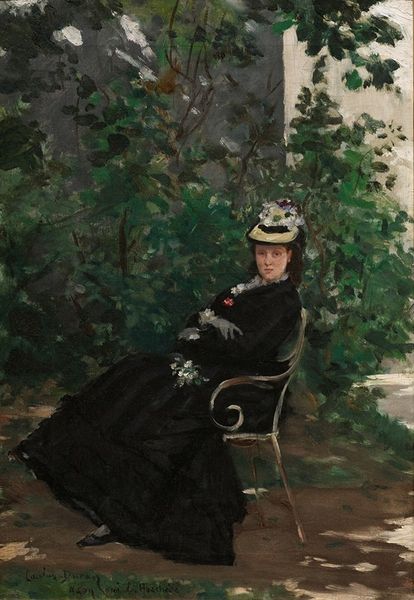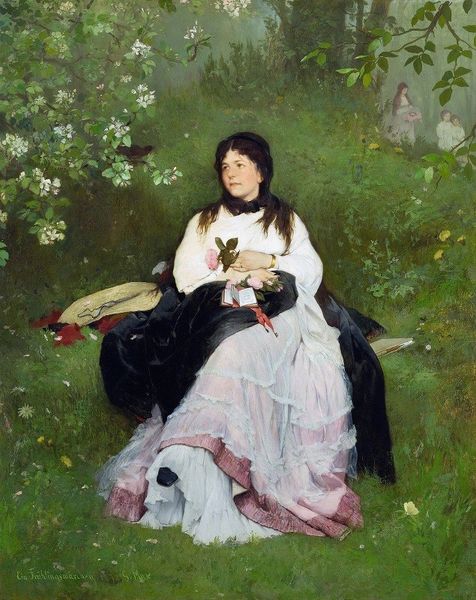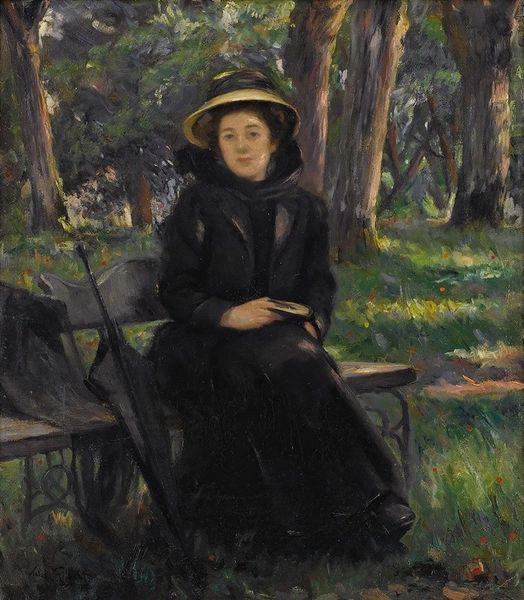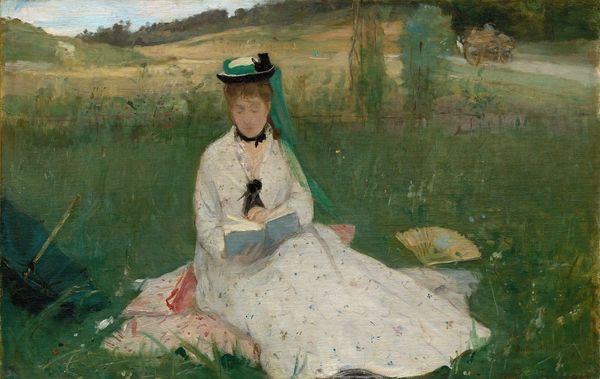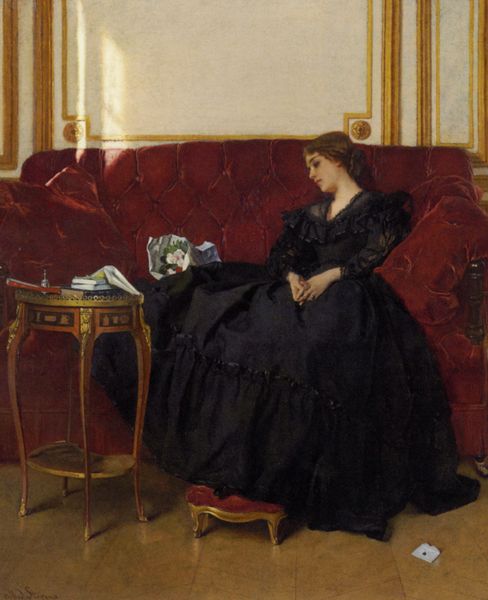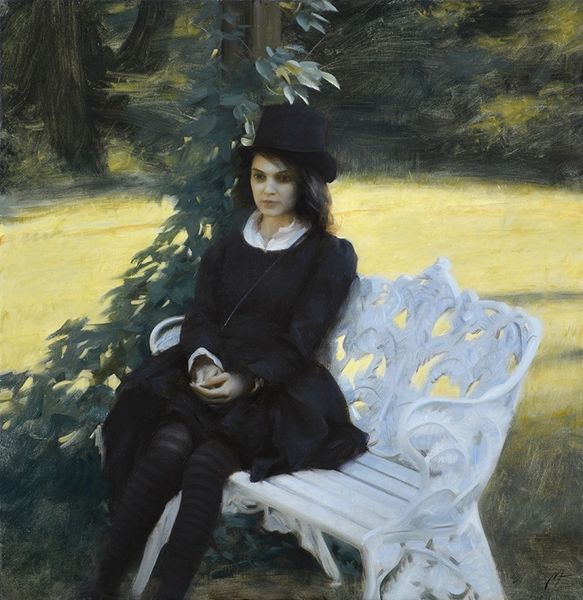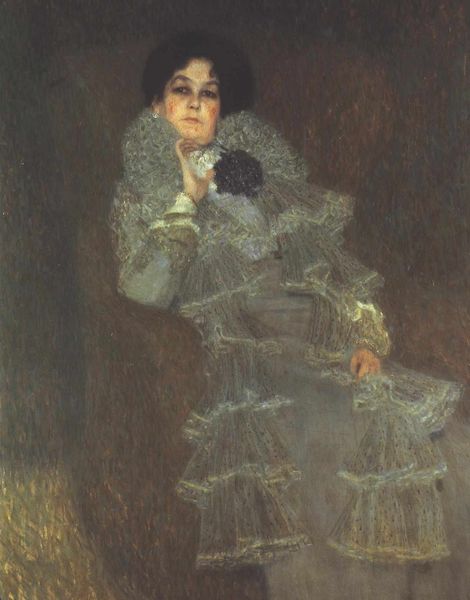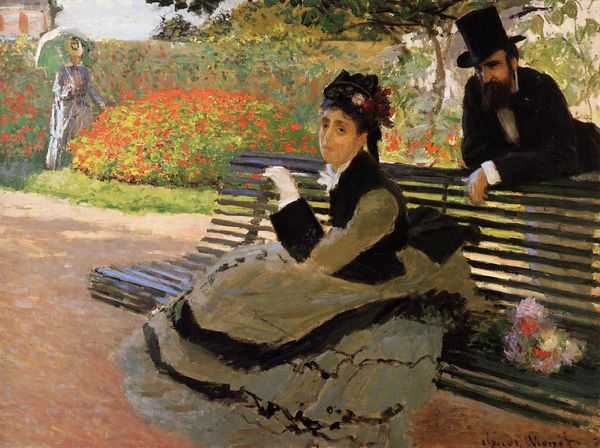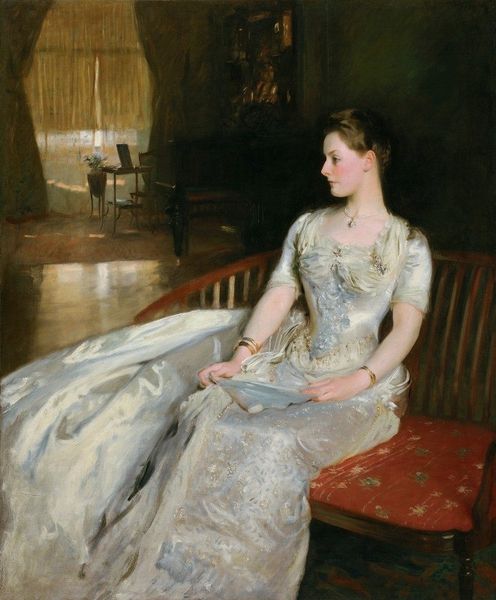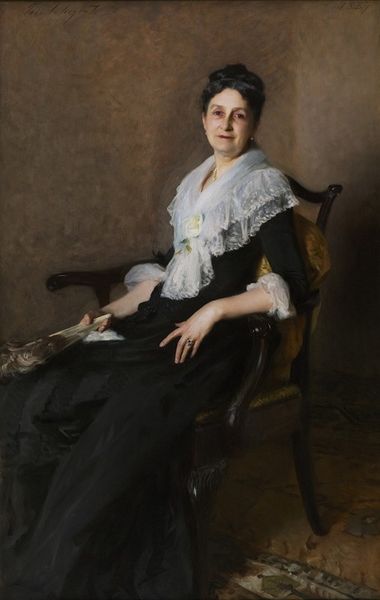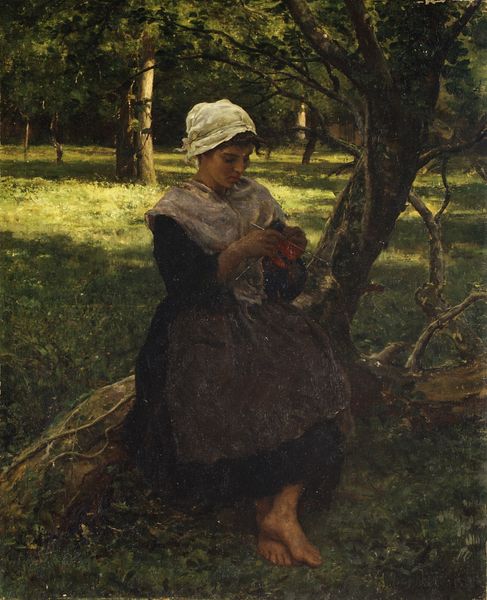
Copyright: Public domain
Editor: Here we have Carolus-Duran's "Study for a Lady in Black" from 1859, created with oil paint. I'm struck by how somber the mood is. It feels like more than just a portrait. What do you see in this piece? Curator: I see a potent representation of 19th-century widowhood, laden with societal expectations. The black dress isn't merely a fashion choice; it's a uniform, a marker of grief and social isolation. How does her posture, combined with the act of knitting, contribute to your reading? Editor: I hadn’t considered the knitting. It looks like a passive occupation, almost reinforcing a sense of confinement. Curator: Precisely. Knitting, traditionally associated with domesticity, becomes a symbol of enforced inactivity for women. The portrait speaks volumes about gendered roles. Does her location, seemingly outdoors, present a paradox? Editor: Yes, it does! It almost suggests a desire for escape, yet she remains bound by her clothing, her social position. Curator: The choice of 'study' as a title suggests a work in progress, doesn't it? Could it indicate the subject is in the process of defining a new role for herself within constricting parameters? This portrait is not just about the individual, but a commentary on the lived realities of many women during this period, wouldn’t you agree? Editor: Absolutely. Framing it within the context of social expectations completely reshapes how I see it. Thanks for opening up those avenues of thought! Curator: It's in those layers that art reveals its true power, acting as both mirror and a critical lens through which we can examine society.
Comments
No comments
Be the first to comment and join the conversation on the ultimate creative platform.
